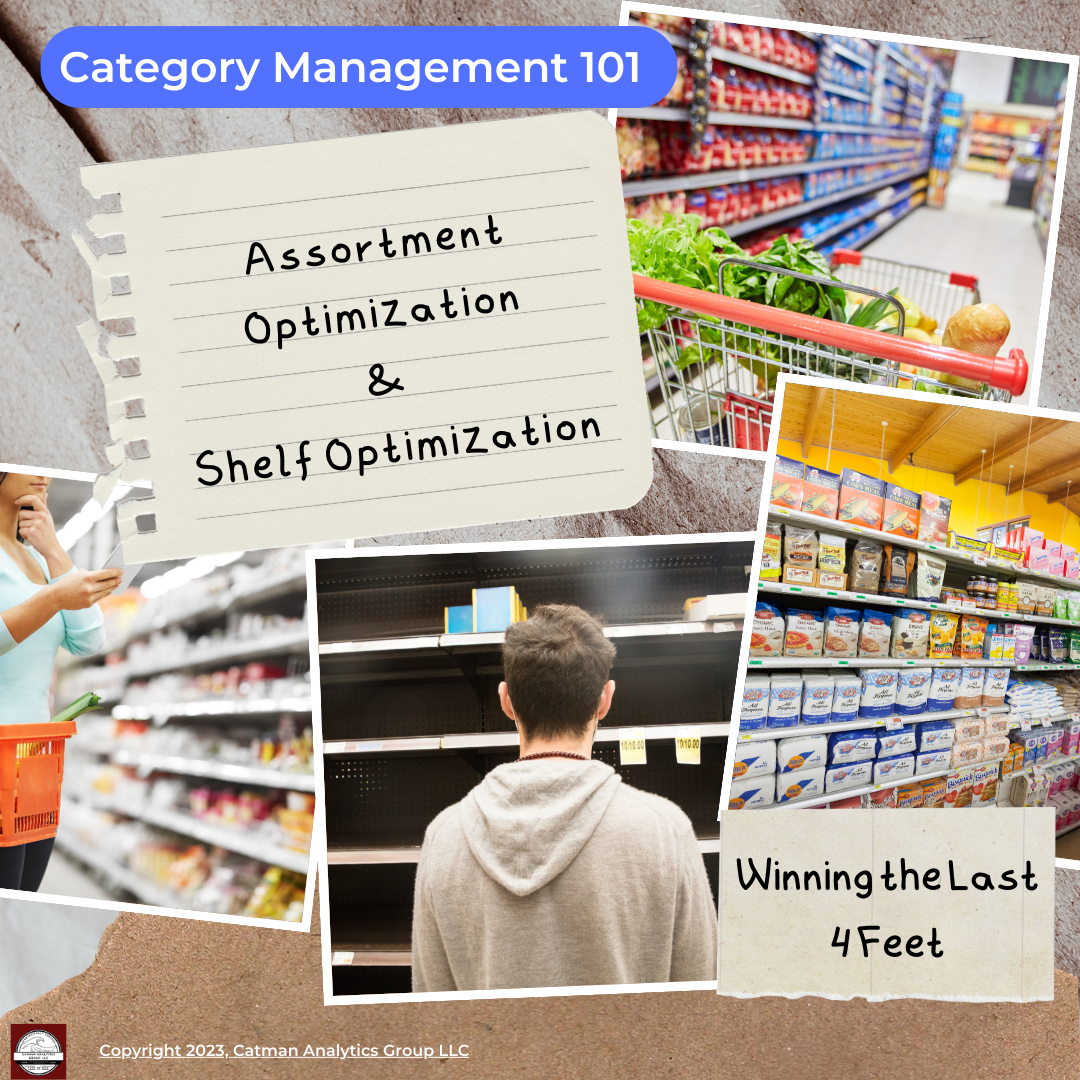- Retailer’s Secret Weapon for winning the shopper, Category Management
- Understanding the differences in Shopper and Consumers Insights
- Dissecting the Shopper Journey, How to Win their Hearts and Minds
- Shopper Insights 101: Accelerate Your Brand’s Success at Retail with Trip Missions
- Shopper Measures 101: Share of Wallet – Where are Your Shoppers Spending Their Money?
- Shopper Marketing and Category Management – Why your Need Both?
- How to Empower Category Management in Today’s Grocery Industry
- Unveiling Category Management Excellence with Assortment and Shelf Optimizations
Elevate your Retail Strategy with Category Management Excellence!
Staying ahead of your competition requires a strategic approach that goes beyond just selling products.
Did you know that effective category management and assortment optimization can boost retail sales by up to 10%?
In today’s fiercely competitive retail landscape, the art of curating products goes beyond the shelves. It’s about creating an experience that resonates with your customers and propels your brand forward.
In my 30 years of leading Category Management efforts for companies like Kraft, Kimberly-Clark, Novartis, Samsung, and Signify, I’ve witnessed firsthand how meticulous category management can transform businesses. For example, during my tenure in one of the above organizations, we revamped our category strategy, resulting in a 15% increase in revenue within six months.
In this article, I will dive into 3 Focus Areas – Understanding Category Management, Assortment, and Shelf Optimization. If you enjoyed this article and would like to learn more, feel free to reach out to me at Catman Analytics Group, where we focus on Retail Optimizations, the pivotal strategies in helping your business thrive in the marketplace.
Focus #1: Understanding Category Management – The Foundation of Success
Category management involves the strategic planning, organization, and control of products within a retail store to maximize overall performance. It requires a deep understanding of consumer behavior, market trends, and the competitive landscape to curate an assortment that meets customer needs and drives revenue.
Essential Pillars of Effective Category Management:
- Market Analysis: Thoroughly understanding market trends, consumer preferences, and competitor strategies to identify growth opportunities.
- Assortment Planning: Creating a well-balanced assortment of products that caters to different customer segments and aligns with the store’s overall goals.
- Pricing and Promotion Strategy: Developing pricing strategies and promotional plans to attract customers while maintaining profitability.
- Merchandising and Shelf Layout: Optimizing the placement of products on shelves to enhance visibility, promote cross-selling, and improve the overall shopping experience.
Focus #2: Precision in Product Selection – The Art of Assortment Optimization
How does Assortment Optimization Work?
Imagine you’re a customer walking into a grocery store. The well-arranged display of fresh produce, your favorite snacks at eye level, and a curated selection of organic products all come together to create a personalized shopping experience, crafted to meet your needs. Assortment optimization involves selecting the right mix of products to offer to customers within a category. This process aims to strike a balance between meeting consumer demands, managing inventory, and maximizing profitability.
Effective Assortment Optimization Include:
- Data-Driven Insights: Utilizing data analytics to understand consumer behavior, sales patterns, and product performance, which informs decision-making.
- Consumer-Centric Approach: Aligning the assortment with the needs and preferences of different customer segments to enhance customer satisfaction.
- Lifecycle Management: Continuously updating and refreshing the assortment to adapt to changing trends and customer preferences.
- Seasonal and Regional Variations: Tailoring assortments based on seasonality and regional preferences to cater to local markets effectively.
Focus #3: Elevate your Shelves: The Strategy Behind Shelf Optimization
Research conducted by Retail Insights Group found that an effective shelf optimization strategy can increase sales by up to 20%.
Picture this: You’re at the checkout counter, and right beside you are neatly arranged travel-sized skincare products, subtly tempting you to add that last-minute item to your cart. Shelf optimization involves the strategic arrangement of products on shelves to maximize visibility, accessibility, and sales. An optimized shelf layout can drive impulse purchases and enhance the overall shopping experience.
Effective Shelf Optimization Include:
- Planogram Design: Creating planograms that guide the placement of products on shelves, considering factors like product size, category adjacencies, and customer flow.
- Eye-Level Placement: Giving priority to high-demand products at eye level to increase visibility and encourage purchases.
- Cross-Promotions: Strategically placing complementary products together to encourage cross-selling and increase basket size.
- Space Utilization: Making the most of shelf space by avoiding overcrowding and ensuring each product has adequate visibility.
How can Catman Analytics Group help?
Our approach isn’t just theoretical—it’s proven. As a leader in this discipline, I’ve seen where creating new Category Strategies and Improving Retail Optimizations resulted in Grocery, Mass, Club, DIY, and Telecom retailers saw double-digit growth trends.
Are you ready to transform your brand’s success through effective category management?
Let’s start the journey together. Schedule a consultation now and let us help you unlock your brand’s potential. For inquiries and consultations, visit our Services Page.



Leave a Reply